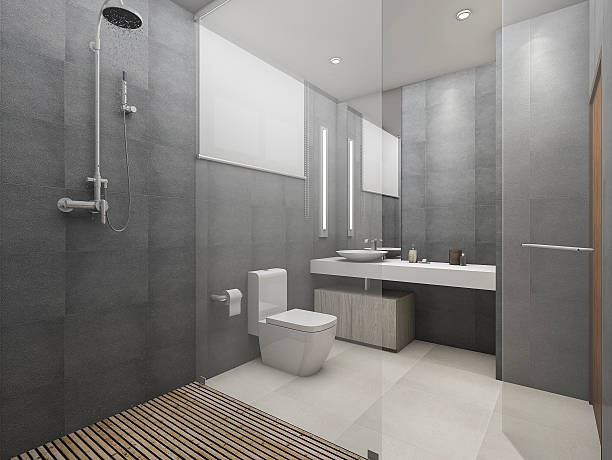bathroom floor tiles

The bathroom floor, often an overlooked element in home design, plays a crucial role in both functionality and aesthetics. Selecting the right tiles for this space involves considering various factors, including durability, style, and maintenance. In this exploration of bathroom floor tiles, we delve into the diverse options available, their benefits, and the impact they can have on the overall ambiance of your bathroom.
1. Ceramic Tiles: Ceramic tiles are a popular choice for bathroom floors due to their affordability, durability, and wide range of design options. Available in various sizes, shapes, and colors, ceramic tiles offer versatility that caters to different tastes and styles. Their water-resistant nature makes them an excellent choice for a space prone to moisture.
2. Porcelain Tiles: Similar to ceramic tiles but denser and less porous, porcelain tiles are highly resistant to water, stains, and scratches. This durability makes them suitable for high-traffic bathrooms. Porcelain tiles can mimic the look of natural materials like marble or wood, providing an elegant touch to your bathroom floor.
3. Natural Stone Tiles: For a luxurious and timeless look, natural stone tiles such as marble, granite, or limestone are unparalleled. These tiles exude sophistication and uniqueness, with each piece showcasing distinctive patterns and colors. However, it’s essential to note that natural stone requires proper sealing and maintenance to prevent damage from water and stains.
4. Vinyl Tiles: Vinyl tiles have gained popularity for their cost-effectiveness, ease of installation, and resistance to water. Modern advancements in vinyl flooring have led to realistic designs that can mimic the appearance of natural materials. Additionally, vinyl is softer underfoot, providing a more comfortable surface compared to ceramic or porcelain tiles.
5. Mosaic Tiles: Mosaic tiles, typically smaller in size, allow for intricate and visually appealing patterns. They can add a touch of artistic flair to your bathroom floor, creating a focal point or accentuating specific areas. Mosaic tiles are available in various materials, including glass, porcelain, and natural stone.
6. Terrazzo Tiles: Terrazzo tiles, composed of a mix of marble, quartz, granite, or glass chips embedded in a cement or epoxy base, offer a unique and eye-catching aesthetic. Terrazzo is durable and resistant to water, making it suitable for bathroom floors. The speckled patterns can add character to the space.
7. Cork Tiles: Cork tiles provide a sustainable and eco-friendly flooring option for bathrooms. Cork is naturally resistant to mold and mildew, making it an excellent choice for moisture-prone environments. Its soft and warm feel underfoot adds a touch of comfort to your bathroom.
8. Patterned Cement Tiles: Cement tiles with intricate patterns and vibrant colors can bring a sense of character and charm to your bathroom. These tiles are handmade and offer a bespoke touch to your space. However, it’s crucial to seal them properly to prevent water damage over time.
In conclusion, selecting the right bathroom floor tiles involves balancing practical considerations with aesthetic preferences. Whether you opt for the classic appeal of ceramic or porcelain, the timeless elegance of natural stone, or the modern versatility of vinyl, each type of tile brings its own set of advantages and visual appeal to your bathroom. By carefully choosing the flooring that aligns with your style and maintenance preferences, you can create a bathroom space that seamlessly combines functionality and beauty.




Leave a Reply